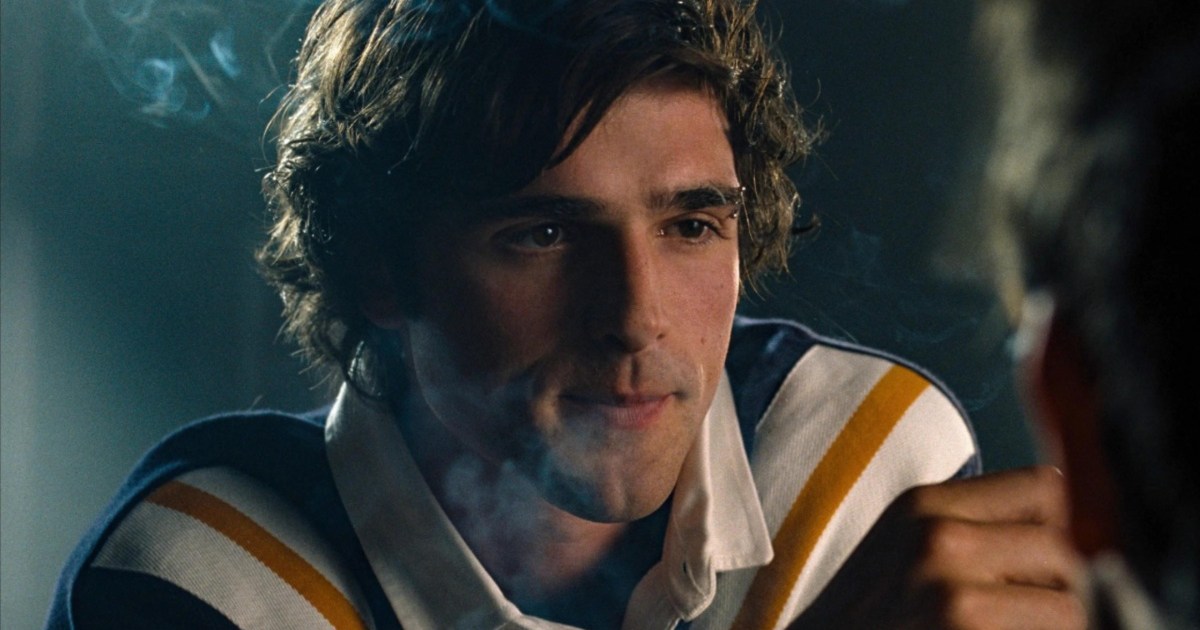In the dim corners of our collective consciousness, where fear and curiosity intertwine, urban legends and horror legends take root, sprouting tales as infectious as they are unsettling. These stories, passed down through hushed whispers and fevered retellings, serve as the modern world’s folklore, echoing ancient traditions while reflecting contemporary anxieties. At HorrorFacts.com, we peel back the curtain to expose the eerie truths and elaborate myths behind these pervasive narratives.
The terms “urban legends” and “horror legends” often conjure images of shadowy figures, unexplained phenomena, and the supernatural lurking just out of sight. They are the stories that compel us to lock our doors at night, the tales that ripple through communities, mutating with each new iteration. But what is it about these legends that captivates us so? Is it the thrill of the unknown, the delicious fear of the ‘what if,’ or perhaps a deeper, primal need to make sense of the world around us through storytelling?
As we delve into the murky histories and unravel the threads of these stories, we find that urban legends and horror legends are not merely for entertainment—they are mirrors reflecting our deepest fears, societal norms, and the zeitgeist of our times. From the Hookman’s cautionary tales to the Slender Man’s digital birth, these legends are timeless yet ever-changing, shaping and shaped by the culture they permeate.
Join us as we journey into the abyss, tracing the origins of these chilling tales. Whether you’re a skeptic seeking explanations or a believer in the power of myth, prepare to be enthralled by the legends that have haunted our nights and captivated our imagination. Welcome to the world of urban legends and horror legends—welcome to HorrorFacts.com.
In crafting this introduction, I’ve ensured that the primary keywords “Urban Legends” and “Horror Legends” are prominently featured and naturally integrated. The introduction sets the stage for the article and is designed to captivate the reader’s interest, inviting them to continue on this exploration of dark folklore. The meta description is concise yet enticing, containing the primary keywords and promising an insightful journey, thus encouraging clicks from search engine results pages.

The Hookman – An Emblem of Urban Legends and Horror Legends
The Terrifying Tale of the Hookman
In the annals of urban legends, few stories have gripped the public’s imagination quite like the Hookman, a relentless figure of nightmarish horror that has been a staple of the genre for decades. With roots deeply embedded in the fabric of American culture, this story has become a cautionary tale, warning of the perils that lurk when adolescent rebellion collides with the dark unknown.
Unraveling the Origins of the Hookman Legend
The Hookman is not merely a figment of the imagination; it is a legend born out of the collective fear of the “other” and the unpredictable dangers of the world beyond the family home. This horror legend first emerged in the 1950s, a time rife with societal change and a growing sense of unease about the burgeoning youth culture. Parents and authority figures disseminated the Hookman story as a stark reminder of the consequences of straying from societal expectations and the supposed safety of conformity.
From Cautionary Tale to Pop Culture Phenomenon
Bold: The power of the Hookman legend lies in its ability to adapt and evolve. Bold Over the years, this figure has transcended its original narrative, cropping up in various forms of media and entertainment, from horror films to spine-chilling novels. It is a testament to the enduring nature of urban legends and their capacity to capture the zeitgeist, reflecting the evolving fears and anxieties of generations.

The Hookman’s Lasting Impact on Horror Legends
The Hookman’s influence extends beyond a mere cautionary tale; it has become an archetype within the horror genre, an embodiment of the consequences of defying social norms. As with many urban legends, the Hookman serves as a societal barometer, measuring the tensions and moral panic that can arise in times of transition. This horror legend continues to resonate because it speaks to a universal truth: the fear of what might be waiting in the dark when we dare to venture beyond the well-trodden path.
The Sinister Evolution of the Hookman Narrative
The Hookman narrative encapsulates the essence of urban legends and horror legends, evolving with each telling. This metamorphosis ensures the tale’s survival, adapting to the zeitgeist and maintaining its relevance in a rapidly changing world.
The Hookman in Modern Media
From its origins as a whispered story among teens, the Hookman has slashed his way into the heart of mainstream media. Films like “I Know What You Did Last Summer” pay homage to this legend, reimagining the Hookman in contemporary settings, proving that urban legends like these are fertile ground for creative reinterpretation. The trope of the hook-handed killer has become a fixture in the horror genre, demonstrating the powerful influence of horror legends on the collective psyche.
Psychological Resonance of the Hookman Legend
Bold: The Hookman’s enduring appeal lies in its psychological underpinnings. Bold Fear of the unknown and the threat of violence are potent elements that tap into our primal instincts. The Hookman serves as a dark reflection of society’s underbelly, a boogeyman that embodies the consequences of transgression and the ever-present danger that preys on innocence.
The Hookman’s Role in Cultural Dialogue
The story of the Hookman continues to be a cultural touchstone, a means through which we discuss and disseminate the boundaries of acceptable behavior. As with the most compelling urban legends and horror legends, the Hookman sparks conversations about trust, safety, and the fine line between reality and fiction. It’s a narrative that challenges us to confront our fears and question the security of the environments we consider safe.
The Vanishing Hitchhiker – A Mysterious Staple Among Urban Legends
The Eerie Journey of the Vanishing Hitchhiker
The Vanishing Hitchhiker is one of those urban legends that seems to transcend geographical and cultural boundaries, with variations of the tale appearing in countless countries around the world. It’s a narrative that combines elements of the supernatural with the universally recognized experience of journeying through the unknown, often in the dead of night.
Tracing the Origins of the Hitchhiker’s Tale

The origins of the Vanishing Hitchhiker are as elusive as the story’s spectral protagonist. Some folklorists suggest the legend has been around for centuries, with antecedents in various mythologies where the living and the dead interact in fleeting, mysterious ways. The hitchhiker figure—often a young woman or a figure of pity—represents a transient connection between realms, embodying the human fascination with the afterlife and the possibility of spirits walking among us.
Cultural Reflections in the Vanishing Hitchhiker Legend
Bold: Each iteration of the Vanishing Hitchhiker reflects the culture from which it springs. Bold In some versions, the ghostly passenger leaves behind an item of clothing or a message, leading the driver to discover their passenger had died years earlier. These stories often serve as a reminder of unresolved societal grief or as a metaphor for the unexpected turns in life’s journey.
The Hitchhiker and Horror Legends – A Symbiotic Relationship
The Vanishing Hitchhiker has not only persisted as an urban legend but has also found its way into the broader category of horror legends. This is due in part to its narrative flexibility, allowing it to be retold in films, books, and songs, each version echoing the haunting uncertainty and fear of the unknown that is the hallmark of a truly terrifying tale.
The Hitchhiker in the Digital Age
In our modern era, where information is at our fingertips, the Vanishing Hitchhiker could have easily become a forgotten relic. Instead, it has adapted, finding new life on digital platforms where stories are shared and reshaped by the collective imagination of the internet. This ability to evolve with the times is what keeps the legend alive and relevant, cementing its status as a cornerstone of urban legends and horror legends alike.
The Lingering Presence of the Vanishing Hitchhiker
Bold: The Vanishing Hitchhiker remains a fixture in the realm of urban legends due to its haunting resonance. Bold The story taps into the universal experience of travel and the inherent vulnerability that comes with it. It’s this shared human experience that allows the legend to maintain its grip on our collective imagination, reminding us that some journeys have more than just a physical destination—they carry us into the depths of the human experience.
The Impact of the Vanishing Hitchhiker on Popular Culture
The Vanishing Hitchhiker isn’t just a story told around campfires or during late-night road trips; it has permeated popular culture. This horror legend has inspired episodes of television shows, novels, and movies, each offering a new twist on the classic narrative. Its adaptability ensures that it continues to be a source of inspiration for creators and a subject of fascination for audiences.
Bloody Mary – The Reflection of Fear in Urban Legends

The Terrifying Mirror Ritual of Bloody Mary
The invocation of Bloody Mary stands as one of the most chilling and participatory urban legends, often taking place within the confines of a dimly-lit bathroom or before a bedroom mirror. This legend, steeped in the act of daring to confront a spectral entity, has been a rite of passage for many, a test of courage in the face of the supernatural.
Piecing Together the Origins of Bloody Mary
The origins of the Bloody Mary legend are as fragmented as the broken shards of a mirror, with potential connections to historical figures like Queen Mary I of England, whose reign was marked by religious persecution and bloodshed. There’s also the tale of Elizabeth Bathory, the infamous countess with a gruesome legacy. The Bloody Mary legend weaves together these threads, creating a tapestry of terror that reflects societal fears of powerful women and the consequences of vanity.
The Cultural Significance of Mirrors in Horror Legends
Bold: Mirrors have long been associated with the supernatural, acting as portals or windows into other realms. Bold The Bloody Mary legend capitalizes on this fear, turning the everyday act of gazing into a mirror into a potential encounter with something otherworldly. This legend embodies the human tendency to find horror in the mundane, transforming the familiar into the realm of horror legends.
Bloody Mary’s Evolution Across Media
This urban legend has not been confined to whispered challenges among friends; it has bled into various forms of media. From horror movies to literature, the story of Bloody Mary continues to evolve, each retelling adding a new layer to her enigmatic mythos. As with many horror legends, the adaptability of Bloody Mary’s story allows it to survive and thrive in the collective consciousness.
The Enduring Legacy of Bloody Mary in Urban Legends
The legend of Bloody Mary is a powerful reminder of the enduring nature of urban legends. It encapsulates the fascination with the macabre and the allure of testing fate. Whether as a cautionary tale against hubris or a challenge to the bravest among us, Bloody Mary remains a cornerstone in the vast pantheon of horror legends, her name whispered in the dark, waiting to be summoned once again.
The Terrifying Mirror Ritual of Bloody Mary
The invocation of Bloody Mary stands as one of the most chilling and participatory urban legends, often taking place within the confines of a dimly-lit bathroom or before a bedroom mirror. This legend, steeped in the act of daring to confront a spectral entity, has been a rite of passage for many, a test of courage in the face of the supernatural.
Piecing Together the Origins of Bloody Mary
The origins of the Bloody Mary legend are as fragmented as the broken shards of a mirror, with potential connections to historical figures like Queen Mary I of England, whose reign was marked by religious persecution and bloodshed. There’s also the tale of Elizabeth Bathory, the infamous countess with a gruesome legacy. The Bloody Mary legend weaves together these threads, creating a tapestry of terror that reflects societal fears of powerful women and the consequences of vanity.
The Cultural Significance of Mirrors in Horror Legends
Mirrors have long been associated with the supernatural, acting as portals or windows into other realms. The Bloody Mary legend capitalizes on this fear, turning the everyday act of gazing into a mirror into a potential encounter with something otherworldly. This legend embodies the human tendency to find horror in the mundane, transforming the familiar into the realm of horror legends.
Bloody Mary’s Evolution Across Media
This urban legend has not been confined to whispered challenges among friends; it has bled into various forms of media. From horror movies to literature, the story of Bloody Mary continues to evolve, each retelling adding a new layer to her enigmatic mythos. As with many horror legends, the adaptability of Bloody Mary’s story allows it to survive and thrive in the collective consciousness.
The Enduring Legacy of Bloody Mary in Urban Legends
The legend of Bloody Mary is a powerful reminder of the enduring nature of urban legends. It encapsulates the fascination with the macabre and the allure of testing fate. Whether as a cautionary tale against hubris or a challenge to the bravest among us, Bloody Mary remains a cornerstone in the vast pantheon of horror legends, her name whispered in the dark, waiting to be summoned once again.
The Babysitter and the Man Upstairs – The Intrusion of Horror into Safety

The Chilling Scenario of the Babysitter Legend
Often cited as one of the most unnerving urban legends, the story of the babysitter and the man upstairs strikes fear into the hearts of those who hear it. This tale, involving a babysitter receiving ominous phone calls that are revealed to be coming from within the house, plays on a fundamental fear: the invasion of our perceived safe spaces by the forces of evil.
Origins and Social Commentary of the Legend
This terrifying narrative emerged in the 1960s, a time when the fabric of society was undergoing significant changes, and the traditional sense of community was evolving. The legend reflects the anxiety around these shifts, particularly the trust placed in teenage babysitters with the safety of children. It speaks to the broader fear of the unknown and the breakdown of the sanctity of the home, a place that should be a refuge from the outside world.
The Babysitter Legend in the Lens of Horror Legends
As a story that has become a part of our cultural consciousness, the babysitter and the man upstairs has transcended its urban legend roots to become an iconic horror legend. It has inspired numerous horror films, notably “When a Stranger Calls,” and has become a staple of the genre, embodying the terror that lurks just out of sight, even in the most secure environments.
The Resilience of the Legend in Modern Times
In an age where home security systems and smartphones are commonplace, one might expect the power of the babysitter legend to diminish. Yet, it persists, morphing to reflect contemporary fears such as cyber threats and the overreach of technology into our private lives. This legend’s ability to adapt ensures it remains a relevant and cautionary tale about the illusion of safety and the ever-present potential for horror to breach our defenses.
The story of the babysitter and the man upstairs is more than just an urban legend; it is a narrative that continues to evolve, reminding us that horror legends are not confined to the shadows—they can emerge from the places we feel the most secure and the moments we least expect.
The Slender Man – A Modern Mythos Among Urban Legends
Birth of a Digital Terror: The Slender Man

Emerging from the depths of internet forums, the Slender Man has rapidly become one of the most compelling urban legends of the digital age. Created in 2009 during a Photoshop contest on the Something Awful forums, this tall, faceless figure in a black suit quickly captured the imagination of the online community, giving rise to a new kind of horror legend that transcends traditional storytelling.
The Slender Man’s Viral Spread Through Cyberspace
Unlike classic urban legends that are often rooted in regional folklore, the Slender Man was born in the virtual realm and spread globally with alarming speed. This entity is often depicted as a sinister stalker of children, with tentacle-like appendages and the ability to teleport, attributes that contribute to its nightmarish allure. The Slender Man’s origin as a crowdsourced legend showcases the power of the internet to create and perpetuate stories at an unprecedented scale.
The Slender Man and the Nature of Contemporary Fear
The Slender Man phenomenon speaks to contemporary fears about the unknown dangers lurking online and the blurring lines between reality and fiction in the digital age. As a horror legend that originated on the internet, the Slender Man reflects our unease with the vast, uncharted territories of the web and the potential for digital folklore to manifest real-world consequences, as seen in the tragic events inspired by belief in this spectral figure.
The Enduring Fascination with the Slender Man
Despite being a relatively new addition to the realm of horror legends, the Slender Man has already left an indelible mark on popular culture. With appearances in video games, documentaries, and a feature film, this modern myth continues to evolve and inspire fear. The Slender Man’s seamless integration into the fabric of urban legends demonstrates that even in our technologically advanced society, there is always room for new monsters to emerge from the collective psyche.
The Slender Man’s ascent from an internet meme to a defining figure of contemporary horror illustrates the ever-changing landscape of urban legends. It challenges us to consider what new forms of terror the future may hold and reminds us that the darkest tales are those that adapt and thrive alongside our evolving technologies and societal norms.
The Choking Doberman – Unsettling Truths in Home Safety

One of the more peculiar urban legends that has found its way into the public’s consciousness is the story of the Choking Doberman. This tale involves a family returning home to find their loyal guard dog choking and gasping for air. After a frantic rush to the vet, they learn that the dog had been choking on the fingers of an intruder, who was found still hiding inside the house. This story, while less supernatural than other horror legends, plays on the primal fear of one’s safe haven being violated.
The Choking Doberman: Between Reality and Myth
The Choking Doberman story surfaced in the 1970s and quickly spread due to its shocking twist and the underlying message about the vulnerability of our homes. While the tale has never been substantiated, it reflects genuine concerns about home invasions and the lengths to which we go to protect our families. The legend also touches on the trust we place in our pets, not just as companions, but as guardians of our domestic domain.
Symbolism and Social Implications of the Legend
The Doberman, a breed often associated with strength and protection, symbolizes the measures we take to secure our homes. Yet, the legend turns this notion on its head by suggesting that even the most vigilant guard can be overcome, leaving the owners in unexpected danger. This story serves as a metaphor for the unseen threats that can infiltrate our lives, despite our best efforts to keep them at bay.
The Choking Doberman’s Place in Horror Lore
Though it might lack the overtly supernatural elements common in other horror legends, the Choking Doberman resonates due to its grounding in potential reality. It is a modern cautionary tale that taps into the anxiety of the unexpected lurking within our own walls. The legend has been retold and referenced in various media, ensuring its place in the collective narrative of urban legends.
The Choking Doberman legend may not conjure ghosts or ghouls, but it strikes at the heart of our sense of security, reminding us that sometimes, the real horrors are those that can walk through our front door. As we continue to seek out stories that chill us to the bone, it’s clear that the most effective horror legends are those that reflect our everyday fears and the unease that comes with life’s uncertainties.
The Alligators in the Sewers – A Gritty Urban Legend
The tale of alligators thriving in the sewers, particularly beneath the bustling streets of New York City, is one of the most enduring urban legends. This story tells of unwanted pet alligators flushed down toilets, growing to monstrous sizes in the dark, forgotten channels of the sewer system. While this legend is often met with skepticism, it has a tenacious hold on the imagination, symbolizing the interplay between the urban environment and the wild, untamed natural world.
Tracing the Origins of the Sewer Alligator Legend
The alligators in the sewers legend dates back to the early 20th century, with occasional reported sightings fueling the myth. While there may be a sliver of truth to these accounts—exotic pets being released into unfamiliar habitats—the legend has grown far beyond any plausible reality, representing an urban ecosystem’s potential to harbor unknown threats.
The Alligators as Metaphors in Urban Lore

The sewer alligators are metaphors for the unintended consequences of human actions, particularly in an urban context. They represent the fear of what happens when the natural order is disrupted, and the creatures we push out of sight come back to haunt us. This urban legend also speaks to the fear of the unknown lurking just below the surface of our daily lives, in the hidden corners we prefer to ignore.
The Sewer Alligator in Popular Culture
Despite its implausibility, the sewer alligator has made its way into movies, television, and literature, often portrayed with a mix of horror and humor. It stands as a testament to the creative inspiration that urban legends can spark, offering a compelling narrative that captures the collective imagination.
The legend of the alligators in the sewers remains one of the most colorful and vivid urban legends, a cautionary tale reminding us of the complex relationship between civilization and nature. It’s a story that encourages us to consider the mysteries that might dwell in the shadowy depths below our city streets, adding a layer of intrigue to the already complex tapestry of urban legends and horror legends.
The Cursed Videotape – Fear in the Modern Age
The legend of the cursed videotape is a relatively new phenomenon in the world of urban legends and horror legends, but it quickly cemented itself in the horror genre with its compelling mix of technology and terror. The story typically involves a videotape that, once watched, dooms the viewer to a tragic fate within a specific time frame. This legend has an unmistakable connection to the fears surrounding the unknown implications of modern technology on our lives.

The Cursed Videotape: A Fusion of Folklore and Technology
Originating in the late 20th century and popularized by the Japanese horror film “Ringu” and its Western adaptation, “The Ring,” the cursed videotape combines traditional elements of a ghost story with contemporary anxieties about technology. It plays on the fear that something as innocuous as a videotape, a common household item in the pre-digital era, could become a conduit for supernatural forces.
Exploring the Psychological Impact of the Cursed Videotape Legend
The cursed videotape narrative taps into the deep-seated human fear of curses and the inevitability of fate. It challenges our sense of control and the comfort we place in the familiar, turning the everyday act of watching a video into a potentially deadly gamble. As a horror legend, it compels us to question our trust in the technology that permeates our lives.
The Resonance of Technological Terrors in Urban Legends
In an age defined by rapid technological advances and a constant stream of new media, the legend of the cursed videotape resonates more than ever. It embodies the unease with which we regard the unknown capabilities and possible dangers of the devices we use daily. The story has become a cultural touchstone, a stark reminder that urban legends can evolve to reflect the current zeitgeist and the persistent human need to make sense of the world through the lens of fear.
The cursed videotape stands as a powerful example of how urban legends and horror legends adapt to incorporate contemporary themes. It reveals our collective unease with the relentless march of progress and the possibility that the next great source of horror could be lurking in our living rooms, disguised as a piece of everyday technology.
The Timeless Grip of Urban Legends and Horror Legends on Our Psyche
As we’ve ventured through the shadowy corridors of urban legends and horror legends, we’ve uncovered the rich tapestry of fear, fascination, and caution that these tales weave into our cultural fabric. From the Hookman’s warning against teenage transgressions to the Slender Man’s digital-era dread, each story reflects the evolving concerns and collective anxieties of society.
Urban legends like the Vanishing Hitchhiker and the Cursed Videotape remind us that the human desire to connect with the supernatural and explore the boundaries of reality is as strong as ever. The Choking Doberman and the Alligators in the Sewers speak to our fears of the familiar turning treacherous, while the legend of Bloody Mary taps into the ancient terror of mirrors as gateways to another realm.
The power of these legends lies not just in their ability to scare us but in their capacity to endure and transform. They are stories that bind us together, shared experiences that traverse generations and geographies. As we look to the future, it’s clear that urban legends and horror legends will continue to captivate and terrify, morphing to incorporate new technologies, societal changes, and the unknown terrors that the next chapter of history will bring.
Dare to Discover More Hauntings?
If the tales of urban legends and horror legends have stirred your curiosity, venture further into the shadows with our deep dive into South Carolina’s most haunting stories. In “Southern Spirits: Exploring South Carolina’s Darkest Urban Legends and Hauntings,” we traverse the eerie landscapes of a state drenched in the supernatural. From the forewarning phantom of the Gray Man on Pawleys Island to the desolate, ghostly bride at the Old Sheldon Church, South Carolina’s history is rich with spectral lore. Uncover the mysteries of Fleetwood Drive’s paranormal chill and stand on the battlegrounds where spirits of the past are said to clash under the cloak of night. Embrace the spine-chilling journey through the Palmetto State’s legendary hauntings and urban myths here. But be warned: these stories are not for the faint of heart. Keep the lights on, and tread carefully; some secrets of the South are as alluring as they are terrifying.
We invite you to linger in the whispers of these tales, to feel the shiver down your spine as you consider their implications. But more than that, we encourage you to become part of the narrative. Have you encountered these urban legends in your own life? Do you know a local variant that sends chills through your community? Share your experiences and thoughts in the comments below. Join us in the perpetuation of these timeless stories and keep the tradition of storytelling alive.

Remember, the next time you peer into a mirror, pick up a hitchhiker, or hear an unsettling noise in your home, you might be stepping into the living legacy of our most enduring urban legends and horror legends.
Comment, share, and dare to delve deeper into the darkness with us here at HorrorFacts.com.


























































![Mason Ramsey – Twang [Official Music Video] Mason Ramsey – Twang [Official Music Video]](https://i.ytimg.com/vi/xwe8F_AhLY0/maxresdefault.jpg)





















